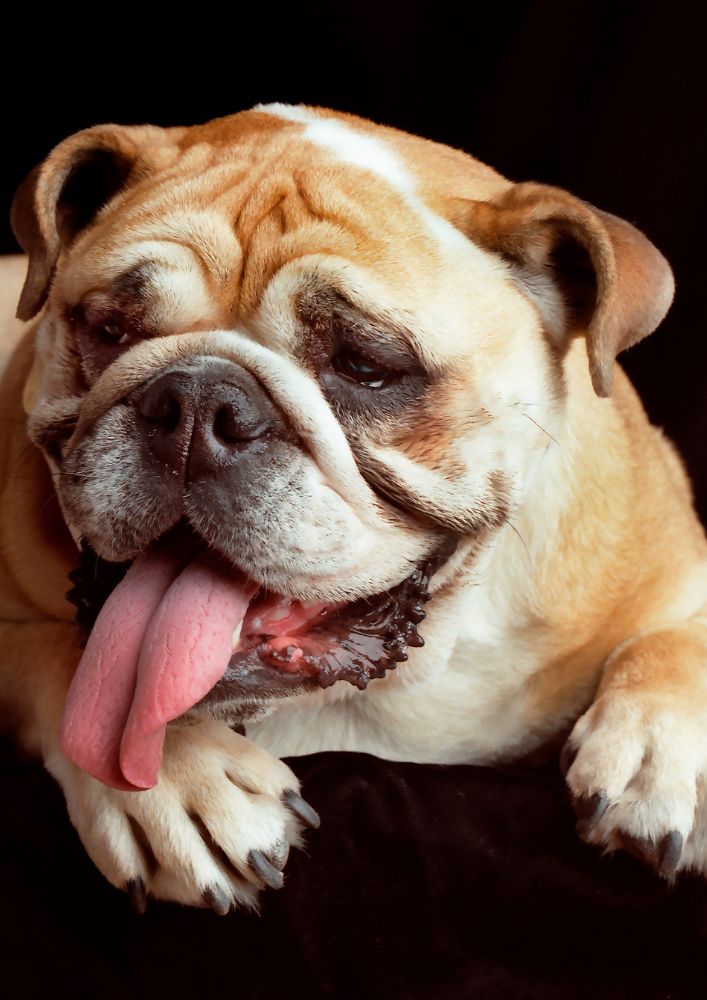Everything You Need to Know About the English Bulldog

The English Bulldog, often simply referred to as the Bulldog, is a beloved breed known for its distinctive appearance, gentle temperament, and historical significance. Originally bred for bull-baiting, Bulldogs have evolved into affectionate companions cherished for their loyalty and laid-back demeanor.
A Brief History
The English Bulldog has a fascinating history dating back to the 13th century in England, where they were initially bred for bull-baiting. This practice involved Bulldogs gripping the bull’s nose and refusing to let go, showcasing their strength and tenacity. Over time, bull-baiting was outlawed, and Bulldogs transitioned to become beloved pets known for their gentle and friendly nature.
Appearance and Size
English Bulldogs have a distinctive appearance characterized by their wrinkled face, pushed-in nose (brachycephalic), loose skin folds, and prominent underbite. They have a muscular build with a low-slung body and a short, smooth coat that comes in various colors, including brindle, fawn, white, and combinations of these colors. Bulldogs typically weigh between 40 to 50 pounds (18 to 23 kg) and stand about 12 to 16 inches (30 to 40 cm) tall at the shoulder.
Gentle and Affectionate
English Bulldogs are known for their gentle and affectionate nature. They form strong bonds with their families and are particularly fond of children, often displaying a patient and tolerant attitude. Despite their historical background, modern Bulldogs are calm and easygoing companions who enjoy being part of family activities.
Intelligent and Stubborn
Although Bulldogs are intelligent, they can also be stubborn, which can make training a bit challenging. Positive reinforcement methods, such as treats and praise, work best when teaching Bulldogs basic commands and good behavior. Consistency and patience are key to successfully training these lovable yet sometimes independent-minded dogs.
Ideal Living Conditions
English Bulldogs are well-suited to apartment living due to their calm demeanor and moderate exercise needs. They enjoy short walks and indoor playtime rather than intense physical activities. Bulldogs are sensitive to heat and should be kept cool and hydrated during hot weather. Air-conditioned environments or shaded areas are essential to prevent overheating.
Compatibility with Family and Pets
English Bulldogs are excellent family pets known for their affection towards children and other pets when properly socialized from a young age. They thrive on companionship and enjoy being included in family routines. Supervision is recommended around small children due to the Bulldog’s sturdy build and potential for unintentional knocking.
Grooming Needs
Regular grooming helps maintain the Bulldog’s coat and skin health. Their short coat requires minimal brushing, but attention should be given to cleaning their facial wrinkles to prevent moisture buildup and skin infections. Bathing should be done as needed, using a gentle dog shampoo. Routine care also includes nail trimming, ear cleaning, and dental hygiene to ensure overall well-being.
Exercise Requirements
English Bulldogs have low to moderate exercise needs. Daily short walks and indoor play sessions suffice to keep them physically and mentally stimulated. Avoid rigorous activities or extended periods of exertion, especially in hot or humid conditions, due to their brachycephalic (short-nosed) anatomy, which can lead to breathing difficulties.
Training Tips
Training English Bulldogs requires patience and a positive approach. Use rewards and encouragement to motivate them during training sessions. Keep sessions short and engaging to maintain their interest. Early socialization with various people, pets, and environments helps Bulldogs develop good manners and confidence in different situations.
Social Behavior
Proper socialization from a young age helps Bulldogs become well-adjusted and friendly companions. Expose them to different sights, sounds, and experiences to build their confidence and prevent shyness. Bulldogs enjoy interacting with people and can form strong bonds with their families, making them loyal and loving pets.
Common Health Issues
English Bulldogs are prone to certain health issues due to their unique anatomy and breeding history. Common concerns include respiratory problems, skin infections in facial wrinkles, joint issues like hip dysplasia, and eye conditions such as cherry eye. Regular veterinary check-ups and maintaining a healthy weight help manage these health risks.
Lifespan and Care
English Bulldogs typically live 8-10 years, although some may live longer with proper care. Providing them with a balanced diet, regular exercise suitable for their breed, and routine veterinary care contribute to their overall well-being and longevity. Bulldogs thrive on love and attention from their families, making them cherished companions.
Bulldogs in Popular Culture
English Bulldogs have captured the hearts of many and are frequently featured in popular culture, advertisements, and as mascots for sports teams. Their distinctive appearance and endearing personality have made them iconic symbols of loyalty and companionship.
Conclusion
The English Bulldog is a cherished breed known for its affectionate nature, distinctive appearance, and historical significance. Whether as a devoted family pet, loyal companion, or cultural icon, Bulldogs continue to bring joy and companionship to countless homes around the world.
Considering adopting an English Bulldog? Explore reputable breeders or consider adoption through rescue organizations to find your new furry companion.
Gallery





Quick Facts
- Size: Medium
- Lifespan: 8-10 years
- Group: Non-Sporting






